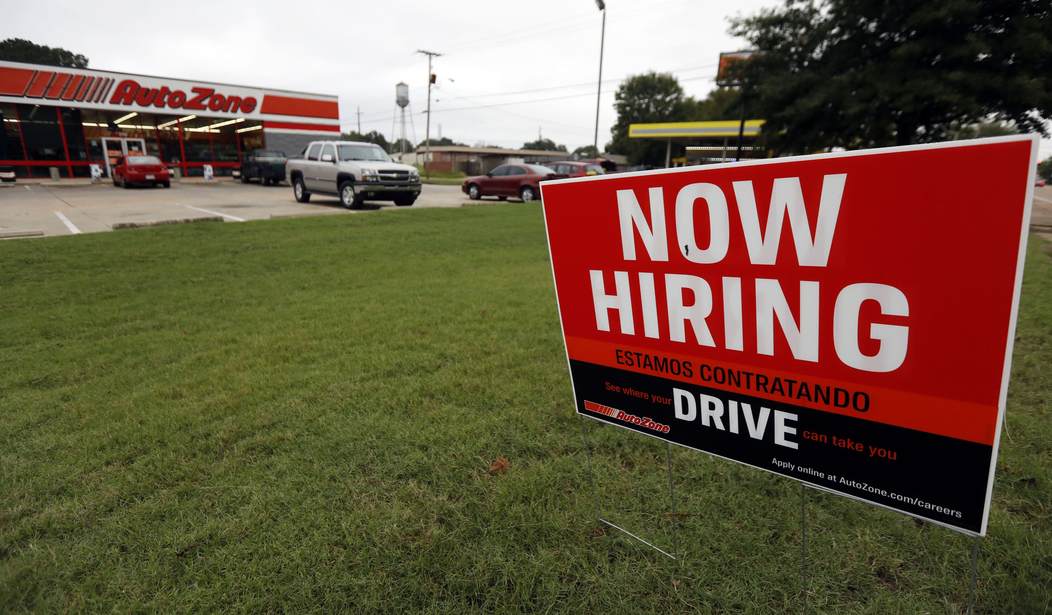Maybe, but the signals on this are mixed at best. In March, the US economy added 916,000 jobs, but in part that came when expanded unemployment benefits appeared endangered, as well as having a fresh burst of stimulus spending injected into the economy. Will that hold up for April?
Today’s weekly initial jobless claims report hints at a big number on one measure, while perhaps signaling a limit. The initial claims dropped below the 500K level for the first time in the pandemic, but more people are sticking around, too:
In the week ending May 1, the advance figure for seasonally adjusted initial claims was 498,000, a decrease of 92,000 from the previous week’s revised level. This is the lowest level for initial claims since March 14, 2020 when it was 256,000. The previous week’s level was revised up by 37,000 from 553,000 to 590,000. The 4-week moving average was 560,000, a decrease of 61,000 from the previous week’s revised average. This is the lowest level for this average since March 14, 2020 when it was 225,500. The previous week’s average was revised up by 9,250 from 611,750 to 621,000.
The advance seasonally adjusted insured unemployment rate was 2.6 percent for the week ending April 24, unchanged from the previous week’s unrevised rate. The advance number for seasonally adjusted insured unemployment during the week ending April 24 was 3,690,000, an increase of 37,000 from the previous week’s revised level. The previous week’s level was revised down by 7,000 from 3,660,000 to 3,653,000. The 4-week moving average was 3,675,750, a decrease of 6,750 from the previous week’s revised average. This is the lowest level for this average since March 28, 2020 when it was 3,611,750. The previous week’s average was revised down by 1,500 from 3,684,000 to 3,682,500.
However, the rest of the report is not quite as clear. Continuing claims in regular state programs went up in the report by almost 40,000, although the four-week average declined slightly by just under 7,000. Initial federal claims for pandemic-related programs dropped by 20,000, and continuing claims declined in those programs by 333,000. However, over 12 million American workers still draw those benefits, which means any bounce is likely to be limited — especially after Congress extended those programs in March. Overall, 16.157 million workers are drawing unemployment benefits of some kind, even if those numbers aren’t getting captured by the U-3 unemployment calculation.
That last data point counters the glib headline from CNBC that this report indicates “another sign that the labor market is getting closer to pre-pandemic levels.” Any progress means “getting closer,” but having 16.157 million sidelined American workers isn’t anywhere near a normal labor market. Jeff Cox also notes the uptick in continuing claims to question just how much we can draw from this report:
The claims decline comes a day before the Labor Department releases its nonfarm payroll count for April. Economists expect that the economy added another 1 million jobs during the month, with hiring likely to be the quickest in the hospitality sector, which sustained the worst of the pandemic-related damage.
However, continuing claims actually ticked higher last week, rising 37,000 to just below 3.7 million. …
While last week’s numbers indicate more growth in the labor market, they won’t figure into the nonfarm payrolls count as they are outside the survey week the Bureau of Labor Statistics uses to compile its estimate.
A separate economic report showed that nonfarm business labor productivity accelerated 5.4% in the first quarter, well above the 4.5% Dow Jones estimate, according to the Bureau of Labor Statistics. Unit labor costs fell 0.3%, which was not as much as the 1% forecast.
The US will need to generate millions of jobs this year just to keep up with population growth, let alone eat into that overhang of outside-the-workforce labor. If we keep up the same pace as March, perhaps we can eliminate that in a little over a year. Can we expect that million-a-month pace to continue? Yesterday’s ADP report offered a sunny look at April’s job creation, but not quite that sunny:
Private sector employment increased by 742,000 jobs from March to April according to the April ADP® National Employment Report. Broadly distributed to the public each month, free of charge, the ADP National Employment Report is produced by the ADP Research Institute® in collaboration with Moody’s Analytics. The report, which is derived from ADP’s actual payroll data, measures the change in total nonfarm private employment each month on a seasonally-adjusted basis.
Their growth projection shows an even distribution among small, medium, and large businesses, with an expected large tilt toward service-providing jobs. They saw a 237K jump in leisure/hospitality jobs, likely a result of accelerated reopenings in big states, but that might be tempered by a lack of workers for those jobs, too. The benefits Congress extended offer more pay than some entry-level jobs in this sector, squeezing businesses that can’t afford to raise prices too much to cover higher labor costs.
Another potentially positive indicator is ADP’s track record. They have usually kept pace with the Bureau of Labor Statistics in trending, although not necessarily on amplitude. Even their adjusted March figure (565K) is over 200K lower than the official BLS number on job creation in March:

It’s possible that this report is picking up on some of the later job creation from the previous month. It’s also possible that it’s missing some of the late job creation in April, too. If this is an accurate indicator, it would suggest that we’re still eating into the sidelined-worker overhang, although not at a particularly aggressive pace. The boost in consumer spending from the back-to-back stimulus payments appear to have boosted job creation, but that effect won’t last long. To make this an enduring trend, Congress will likely have to eliminate incentives for remaining on the sidelines. We’ll have more on that later today.







